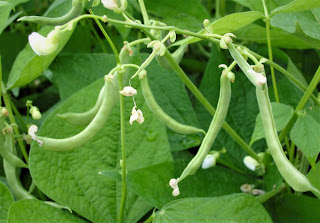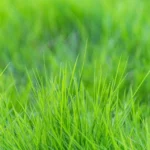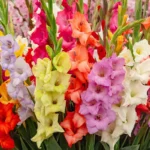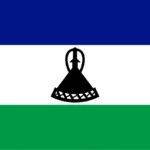
The green bean is an herbaceous plant that belongs to the legume family Fabiaceae. It is native to Peru, but is found all over the world today. The green bean has been grown and eaten for 7000 years. Green beans are known by many common names, including French beans, string beans, snap beans, snaps, and the French name haricot vert. There are more than 130 varieties of green beans that differ in taste, color and size of the pods.
Green beans grow in the form of bush that can reach 8 to 20 inches in height or in the form of 7 to 10 feet long vine.
One cup of raw green beans has just 31 calories, virtually no fat, and only 3.6 grams (g) of sugar.
Leaves of green beans can be green or purple in color. They are divided in three lobes and have smooth edges. Leaves are alternately arranged on the stem.
Green beans contain no cholesterol.
Green beans produce white, pink or purple flowers which are usually pollinated by insects.
Green beans are naturally low in sodium. One cup has only 6.6 milligrams (mg).
Pod is edible part of plant. It can be yellow, green, purple or red in color.
One cup of raw green beans has almost 2 g of protein.
Each pod contains 4 to 6 beans. Most varieties of green bean have smooth, kidney shaped beans.
Green beans contain many essential vitamins, including folate. Folate is a B vitamin that helps prevent neural tube defects and other birth defects.
Green bean propagates via seed. It takes 45 to 60 days from planting to harvesting.
Raw green beans are also a good source of vitamin C.
Best known types of green bean are string type, stringless type and runner beans. String type has either rounded or flat pod. Stringless types have pods without fibrous strings. Runner type grows in the form of vine and it is often used in a dry form.
The average production of snap green beans in the US each year is almost 800,000 tons, with Wisconsin growing almost 300,000 tons alone!
String that stretches along the pod is not very tasty. Botanist Calvin Keeney (also known as “father of the stringless bean”) removed the string from the pod via selective breeding in the 1894.
Green beans are the third most popular vegetable grown in backyard gardens, after tomatoes and peppers.
Green bean is rich source of proteins, carbohydrates and dietary fibers. It also contains vitamins of the B group, vitamins C and K and minerals such as magnesium, iron and manganese.
Green beans are sometimes called string beans because when people first grew them years ago they had a fibrous string that ran along the seam of the bean.
Green beans need to be cooked before consumption. Steaming, boiling, frying and baking are usual methods used for preparation of dishes made of green beans.
The length of time from planting to harvesting of green beans is as short as 45 days but only when it’s warm.
Green bean casserole is popular dish made of green beans, mushroom soup and onions. This dish is traditionally prepared for the Thanksgiving.
Green beans contain nutrients that help prevent diabetes, cardiovascular diseases and cancer.
Raw green bean contains high content of lectins which can be harmful for human health. High temperature (during cooking) destroys lectins.
A Guinness World Record for world’s largest green bean casserole was set by the Green Giant mascot. It weighed in at a whopping 637 pounds and was donated to charity after the official weight was taken.
China is the greatest manufacturer of green beans. It produces and exports over 15 million tons of green beans each year.
Green beans are the most popular pod beans in America.
Leaves of green bean are covered with miniature hairs which are used for trapping of the bed bugs.
Despite their name, green beans aren’t always green. They come in a variety of colors and patterns, like yellow, purple, black, and speckled.
Green bean is annual plant which means that it finishes its life cycle in one year.









